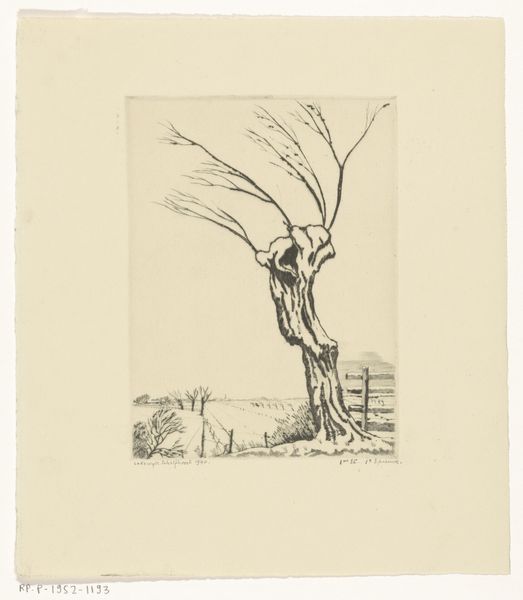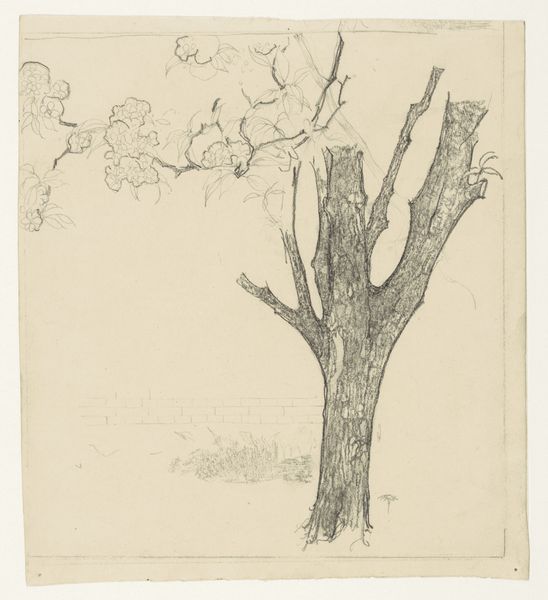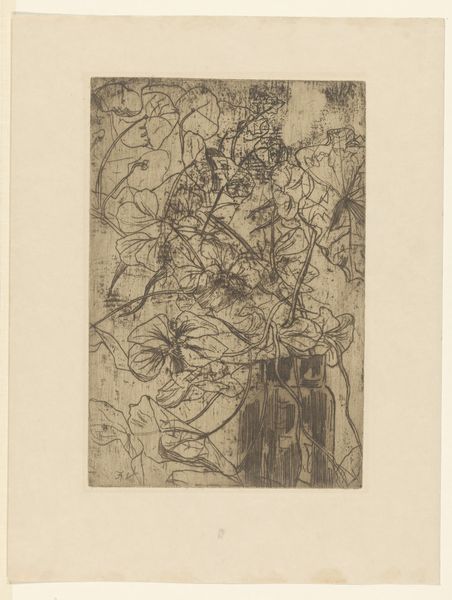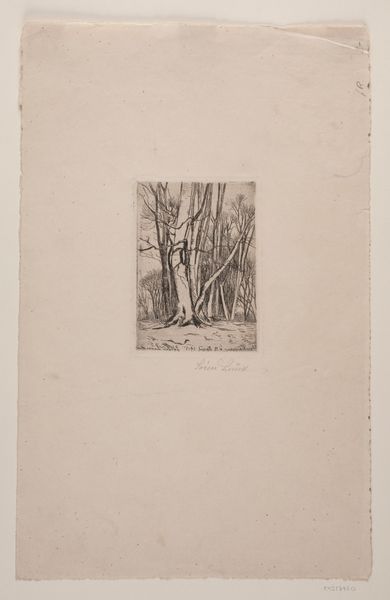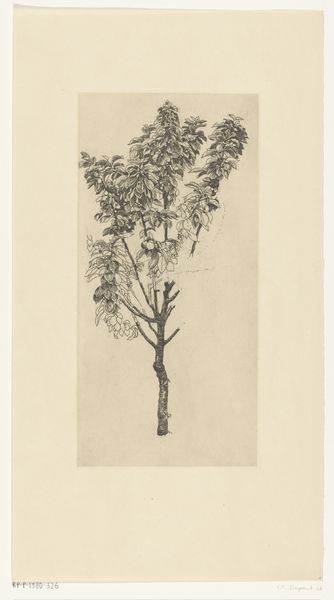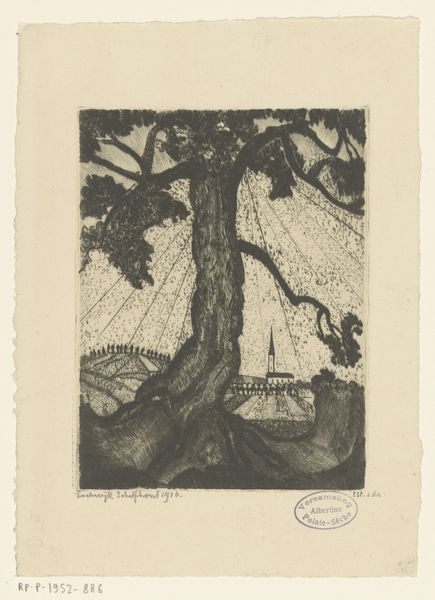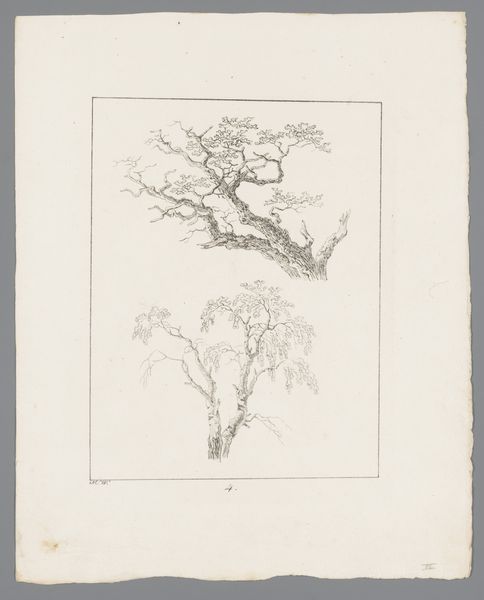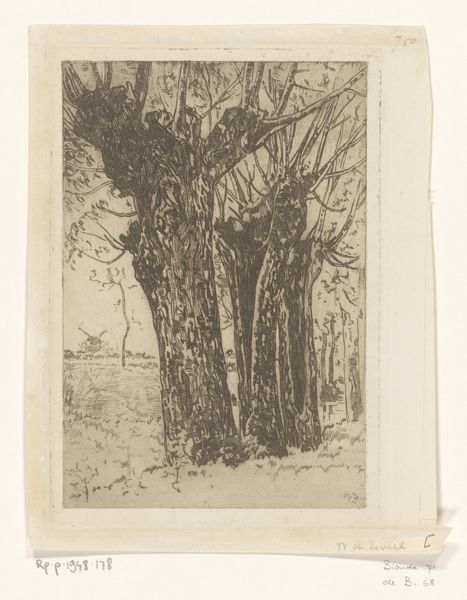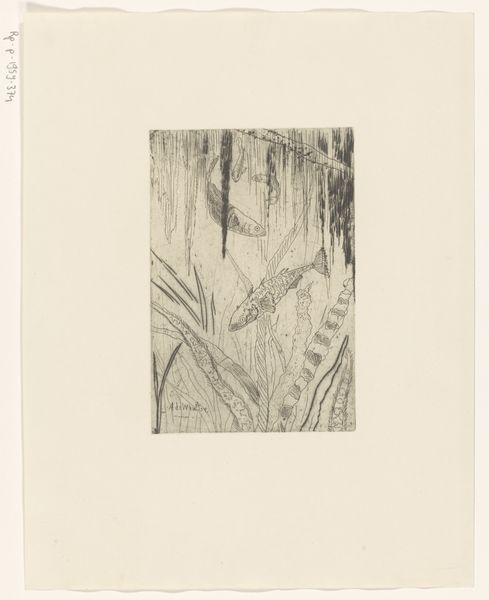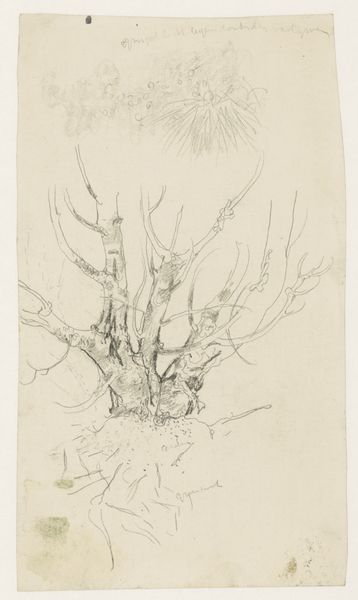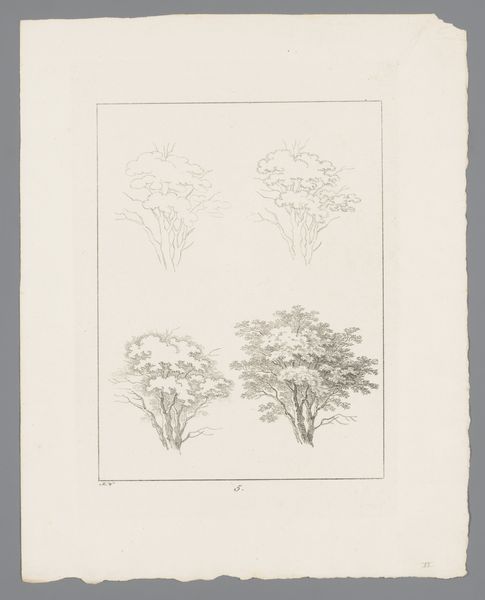
drawing, paper, pencil
#
drawing
#
light pencil work
#
pencil sketch
#
landscape
#
etching
#
paper
#
pencil
#
line
#
pencil work
#
realism
Dimensions: height 185 mm, width 145 mm
Copyright: Rijks Museum: Open Domain
Curator: This unassuming pencil drawing is titled "Stem and Leaves of a Pear Tree," and was rendered by Jan Mankes sometime between 1899 and 1920. The lines are delicate, almost tentative. Editor: It evokes a certain melancholic stillness, doesn’t it? Like a captured breath just before the turn of a new century marked by societal upheaval. The skeletal quality of the branches almost speaks of dormancy, perhaps anticipating disruption. Curator: The skeletal feeling you point out could also reference mortality, something that heavily impacted Mankes' short life. But beyond the potential symbolism of a barren tree trunk, Mankes presents a very common symbol, trees in general, which have always represented rootedness, growth, and strength across many cultures. Here, its vulnerable rendition seems more a meditation on temporality. Editor: Temporality is a great term. The lack of a visible ground, the framing within a clearly defined rectangle—it removes the tree from its organic context and places it squarely in the realm of observation, of examination. What power structures influence that "observation?" Is there some violence in turning something from nature into an art object? Curator: It is indeed intriguing to contemplate the power dynamics embedded in landscape art. The meticulous, almost reverent, way Mankes delineates the leaves suggests a desire to intimately understand, rather than dominate, his subject. He offers, for example, close attention to line and minimal shading, eschewing grandiose landscapes. Perhaps a quiet rebellion? Editor: It is precisely that intimacy, or its representation, that piques my interest. How might we connect the delicate realism employed to contemporary conversations on sustainability? There is so much tension between nature and its perception here. The work stands as a relic that demands continuous discourse, not reverence. Curator: I think that you highlight is essential, even if the work isn’t inherently loud or sensational. It speaks, with gentle but definite precision. Editor: Precision indeed. What lasting power these understated forms hold!
Comments
No comments
Be the first to comment and join the conversation on the ultimate creative platform.
